ZAPRINAST
Synonym(s):1,4-Dihydro-5-(2-propoxyphenyl)-7H-1,2,3-triazolo(4,5-d)pyrimidin-7-one;1,4-Dihydro-5-(2-propoxyphenyl)-7H-1,2,3-triazolo[4,5-d]pyrimidine-7-one, M&B22948;Zaprinast - CAS 37762-06-4 - Calbiochem
- CAS NO.:37762-06-4
- Empirical Formula: C13H13N5O2
- Molecular Weight: 271.27
- MDL number: MFCD00214073
- EINECS: 253-655-1
- SAFETY DATA SHEET (SDS)
- Update Date: 2024-11-19 15:53:33
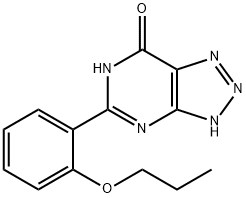
What is ZAPRINAST?
Description
The cyclic nucleotide second messenger guanosine 3’5’-
Chemical properties
Zaprinast is Yellow-Orange Crystalline Powder
The Uses of ZAPRINAST
Zaprinast is a selective inhibitor of cyclic-GMP phosphodiesterase (PDE V, calmodulin insensitive). Since cGMP mediates the vasorelaxant action of nitric oxide, as well as the natriuretic and diuretic effect of at rial natriuretic factor (ANF) through the activation of PKG (cGMP dependent protein kinase), such inhibitors may display vasodilating, relaxant, and diuretic effects. These compounds may prove useful in treating hypertension and congestive heart failure.
The Uses of ZAPRINAST
cGMP phosphodiesterase inhibitor
The Uses of ZAPRINAST
Zaprinast has been used to determine its inhibitory effect on the meiosis of oocytes by germinal vesicle breakdown (GVBD) assay and to test the inhibitory effect of it on the retinal cells by immunohistochemistry.
What are the applications of Application
Zaprinast (M&B 22948) is an inhibitor of cGMP-specific phosphodiesterase
Definition
ChEBI: 5-(2-propoxyphenyl)-2,3-dihydrotriazolo[4,5-d]pyrimidin-7-one is a member of triazolopyrimidines.
Biological Activity
Phosphodiesterase inhibitor, selective for PDE6, 5, 11 and 9 (IC 50 values are 0.15, 0.76, 12.0 and 29.0 μ M respectively).
Biochem/physiol Actions
Zaprinast insubstantially inhibits phosphodiesterase 10 and 11 (PDE10 and PDE11). It also exhibits vasodilating effects.
in vitro
zaprinast is a pde5 and pde6 inhibitor with inhibiting pde9 at moderately high concentrations (29 mm) [1]. indeed, it showed that inhibition of cgmp hydrolysis by infusion of zaprinast increases the effect of anp on natriuresis with no causing deleterious drops in blood pressure. because it was known that anp receptors is localized within the glomerulus and inner medullary collecting ducts, to determine the cellular localization of pde9 enzyme in kidney will be interesting. [2]. the enzyme displayed a high specificity for cgmp with binding sites for cgmp, and a sensitivity to zaprinast similar to smooth muscle pde5, resulting in both enzymes were named cgmp-pde. however, retinal cgmp-pde was first distinguished as photoreceptor cgmp-pde with being specifically distributed in the retina and having a higher vmax and km values than other cgmp-pdes and being modulated by g protein. [3].
storage
Store at RT
References
[1] christensen and torphy (1994) isozyme-selective phosphodiesterase inhibitors as antiasthmatic agents. annu.rep.med.chem. 29 185.
[2] soderling sh, bayuga sj, beavo ja. identification and characterization of a novel family of cyclic nucleotide phosphodiesterases. j biol chem. 1998 jun 19; 273(25):15553-8.
[3]. lugnier c. cyclic nucleotide phosphodiesterase (pde) superfamily: a new target for the development of specific therapeutic agents. pharmacol ther. 2006 mar; 109 (3):366-98. epub 2005 aug 15.
Properties of ZAPRINAST
| Melting point: | 237-238°C dec. |
| Density | 1.48±0.1 g/cm3(Predicted) |
| RTECS | XZ6157358 |
| storage temp. | Store at RT |
| solubility | 45% (w/v) aq 2-hydroxypropyl-β-cyclodextrin: 0.11 mg/mL |
| form | solid |
| pka | 6.92±0.20(Predicted) |
| color | white |
| CAS DataBase Reference | 37762-06-4 |
Safety information for ZAPRINAST
| Signal word | Warning |
| Pictogram(s) |
 Exclamation Mark Irritant GHS07 |
| GHS Hazard Statements |
H315:Skin corrosion/irritation H319:Serious eye damage/eye irritation H335:Specific target organ toxicity, single exposure;Respiratory tract irritation |
| Precautionary Statement Codes |
P261:Avoid breathing dust/fume/gas/mist/vapours/spray. P264:Wash hands thoroughly after handling. P264:Wash skin thouroughly after handling. P271:Use only outdoors or in a well-ventilated area. P280:Wear protective gloves/protective clothing/eye protection/face protection. P302+P352:IF ON SKIN: wash with plenty of soap and water. P305+P351+P338:IF IN EYES: Rinse cautiously with water for several minutes. Remove contact lenses, if present and easy to do. Continuerinsing. |
Computed Descriptors for ZAPRINAST
New Products
(S)-3-Aminobutanenitrile hydrochloride 4-Methylphenylacetic acid N-Boc-D-alaninol N-BOC-D/L-ALANINOL Tert-butyl bis(2-chloroethyl)carbamate 3-Morpholino-1-(4-nitrophenyl)-5,6-dihydropyridin- 2(1H)-one Furan-2,5-Dicarboxylic Acid Tropic acid 1-Bromo-3,5-Di-Tert-Butylbenzene S-2-CHLORO PROPIONIC ACID ETHYL ISOCYANOACETATE 2-Bromo-1,3-Bis(Dimethylamino)Trimethinium Hexafluorophosphate 4-IODO BENZOIC ACID 3-NITRO-2-METHYL ANILINE 1-(2,4-DICHLOROPHENYL) ETHANAMINE (2-Hydroxyphenyl)acetonitrile 4-Bromopyrazole 2-(Cyanocyclohexyl)acetic acid 4-methoxy-3,5-dinitropyridine 1-(4-(aminomethyl)benzyl)urea hydrochloride 2-aminopropyl benzoate hydrochloride diethyl 2-(2-((tertbutoxycarbonyl)amino) ethyl)malonate tert-butyl 4- (ureidomethyl)benzylcarbamate Ethyl-2-chloro((4-methoxyphenyl)hydrazono)acetateRelated products of tetrahydrofuran

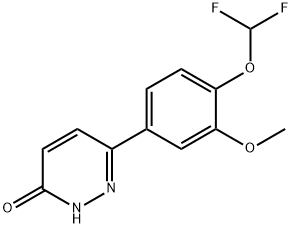
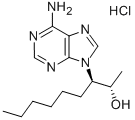

![(4S)-4-[3-(CYCLOPENTYLOXY)-4-METHOXYPHENYL]PYRROLIDIN-2-ONE](https://img.chemicalbook.in/CAS/GIF/85416-75-7.gif)
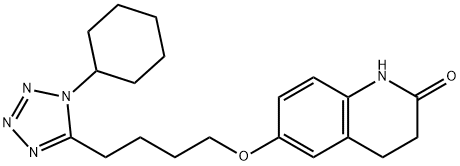
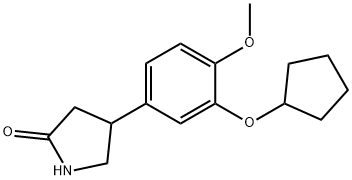
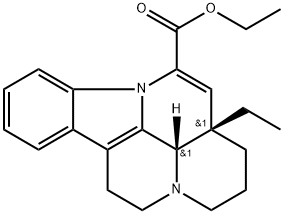
You may like
-
 Zaprinast CAS 37762-06-4View Details
Zaprinast CAS 37762-06-4View Details
37762-06-4 -
 2033-24-1 98%View Details
2033-24-1 98%View Details
2033-24-1 -
 1975-50-4 98%View Details
1975-50-4 98%View Details
1975-50-4 -
 2-HYDROXY BENZYL ALCOHOL 98%View Details
2-HYDROXY BENZYL ALCOHOL 98%View Details
90-01-7 -
 2-Chloro-1,3-Bis(Dimethylamino)Trimethinium Hexafluorophosphate 221615-75-4 98%View Details
2-Chloro-1,3-Bis(Dimethylamino)Trimethinium Hexafluorophosphate 221615-75-4 98%View Details
221615-75-4 -
 61397-56-6 CIS BROMO BENZOATE 98%View Details
61397-56-6 CIS BROMO BENZOATE 98%View Details
61397-56-6 -
 14714-50-2 (2-Hydroxyphenyl)acetonitrile 98+View Details
14714-50-2 (2-Hydroxyphenyl)acetonitrile 98+View Details
14714-50-2 -
 118753-70-1 98+View Details
118753-70-1 98+View Details
118753-70-1